On This Day…April 8th
Pilots of No. 40 Squadron comparing notes in SAAF Spitfire at Gabes Gap, Tunisia, early April, 1943.
These Spitfires were, I believe, VB’s. Photo quite possibly taken 8th April.
US Submarines S-18, S-47, and S-44 at Groton, Connecticut, United States, 8 Apr 1924.
One of the most enduring images of WWII, ‘Wee Willie’. On the 8th April, 1945, this B-17 left it’s home airfield of RAF Bassingbourne, England, on a mission to bomb the railway marshalling yards in Stendhal, Germany. While flying at 20, 500ft above the target, Wee Willie was hit by AA flack at the root of the port wing and despite the initial devastation some of the crew managed to parachute.
The pilot, Robert Fuller, was the only survivor, parachuting to safety and taken as a PoW.
Pilot: 1st LT Robert M. Fuller (Hollywood, CA)
Co-Pilot: 2nd LT Woodrow A. Lien (Brockton, MT)
Navigator: TSGT Francis J. McCarthy (Nashville, TN)
Bombardier: SSGT Richard D. Proudfit (Grenada, MS)
Top Turret Gunner: SSGT Wylie McNatt, Jr. (Corpus Christi, TX)
Ball Turret Gunner: SSGT William H. Cassidy (Brooklyn, NY)
Radio (Radar) Operator: SSGT Ralph J. Leffelman (Seattle, WA)
Waist Gunner : SSGT James D. Houtchens (Kearney, NB)
Tail Gunner: SGT Lemoyne Miller (Butler, PA)
The very seldom modelled USS Chicago (CA-29) being prepared for launching, at the Mare Island Navy Yard, California, 8th April, 1930.
...just in case anyone feels inspired...
In the second of a tryptich of ships this is the USS Ranger, CV-4 (foreground), USS Lexington, CV-2, and USS Saratoga, CV-3 at anchor off Honolulu in Hawaii, 8th of April, 1936.
...and the ‘Lady Lex’, again at anchor off Honolulu, Hawaii, two years later to the day - 8 Apr 1938.
The nose-art of B-25B Mitchell bomber 'Hari Carrier' as she sits on the flight deck of the carrier Hornet (note the tie downs) just days before embarking on the ‘Doolittle Raid’, Apr 8th, 1942.
Dominic Salvatore Gentile was born in Ohio, the son of Italian immigrants who immigrated to the USA in 1907. His father bought him with his own Aerosport Biplane due to his son’s intense and unwavering passion about aircraft. Gentile managed to log over 300 hours flying time by July 1941 which is when he attempted to join the United States Army Air Forces.
Because of the stringent two year training rule in the States for student military fliers, Gentile joined the Canadian Royal Air Force, from where he was posted to England.
Gentile flew the Supermarine Spitfire Mark V with No. 133 Squadron, one of the famed ‘Eagle Squadron’ (North American volunteers) during 1942.
His first kills (a Ju 88 and Fw 190) were on August 19, 1942, during Operation Jubilee, a failed attempt for a small invasion force to take Dieppe harbour from the occupying German forces.
On April 8th, 1944, Gentile shot down 3 Fw-190s in one day to become the top scoring 8th Air Force ace.
He crashed his personal P-51, named ‘Shangri La’, less than a week later while pulling stunts over 4th Fighter Group’s airfield at Debden for assembled press reporters and movie cameras.
He was immediately grounded and he was sent back to the US for a tour selling war bonds. In 1944, Gentile co-wrote with well-known war correspondent Ira Wolfert One Man Air Force, an autobiography and account of his combat missions.
Dom died on January 28th, 1951 when he crashed in a T-33A-1-LO Shooting Star trainer.
Vickers ‘Vellox’ - advertisement April 8th, 1931.
The question of neutrality was a complex and arcane issue in WWII and several countries played fast and loose with the rules ‘governing’ neutral status. These rules centred around not providing any advantage to belligerents, retaining the right to defend it’s own territory, detaining prisoners of any participants for the duration of the conflict, and supplying neither ‘side’ with materials or help.
The painting above shows two damaged Mitchell B-24’s that ‘strayed’ into Swiss territory while bombing Northern Italy, being escorted into Swiss airspace. Both aircraft force landed and crews detained.
The B24’s were ‘Strange Cargo’ (above) and ‘Dopey’...


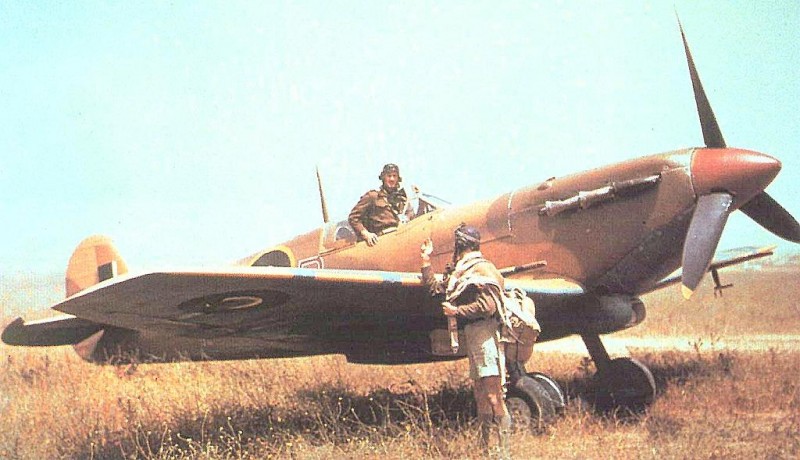
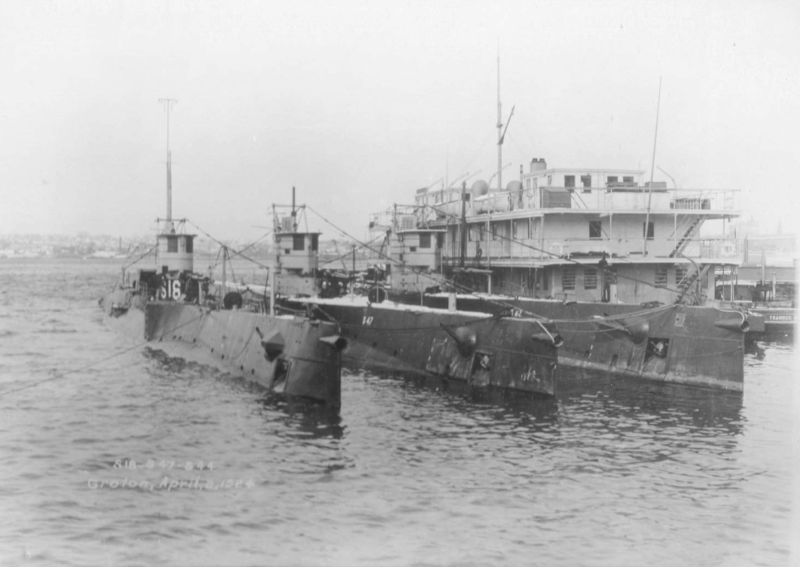
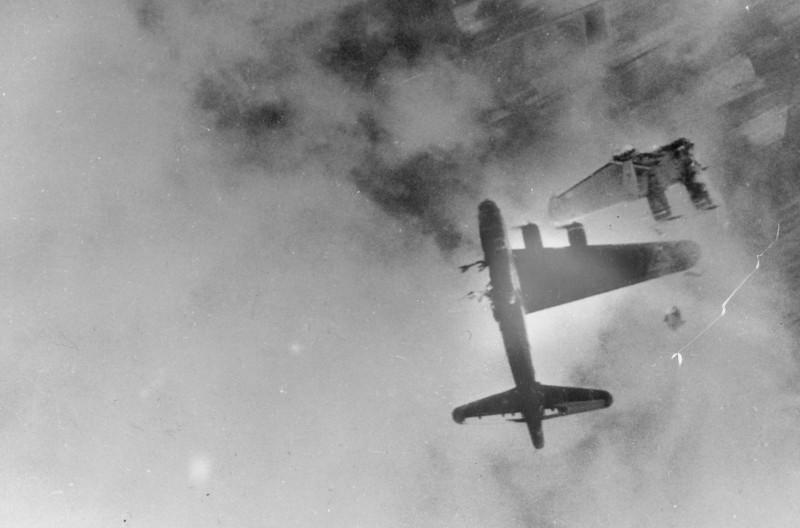
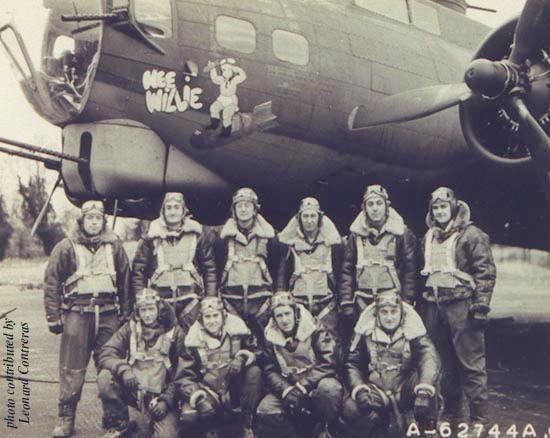
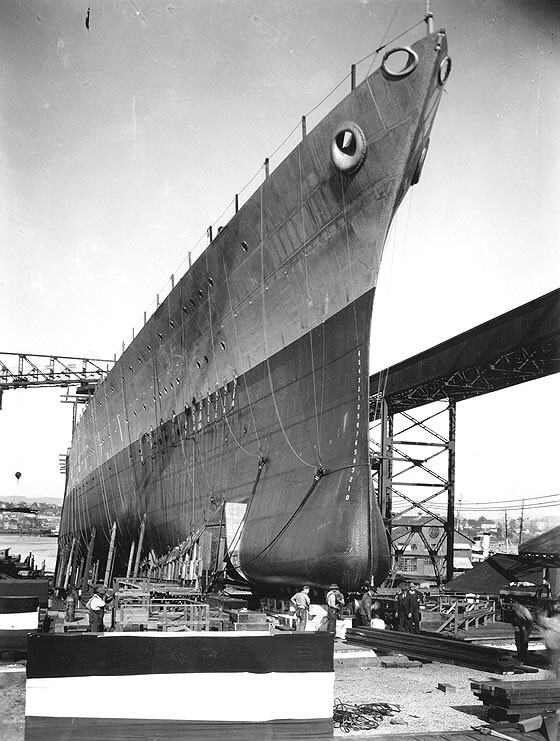
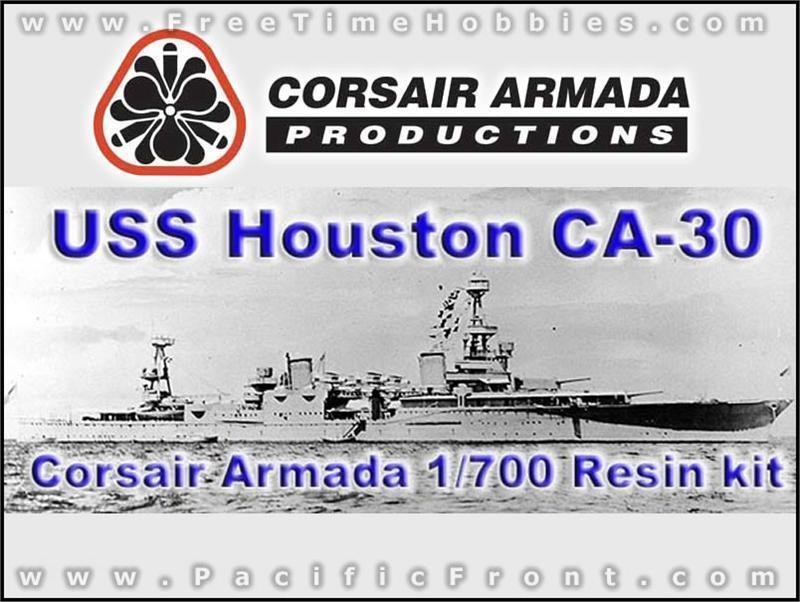
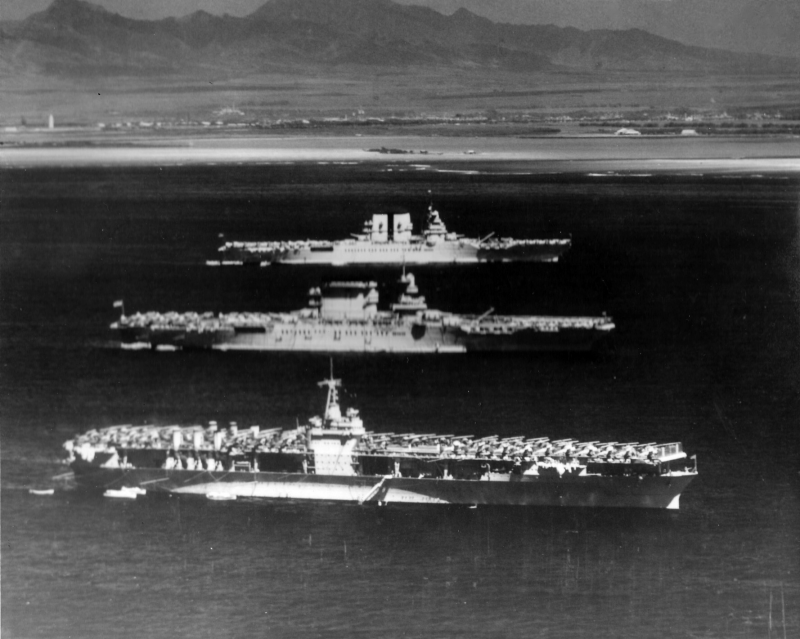
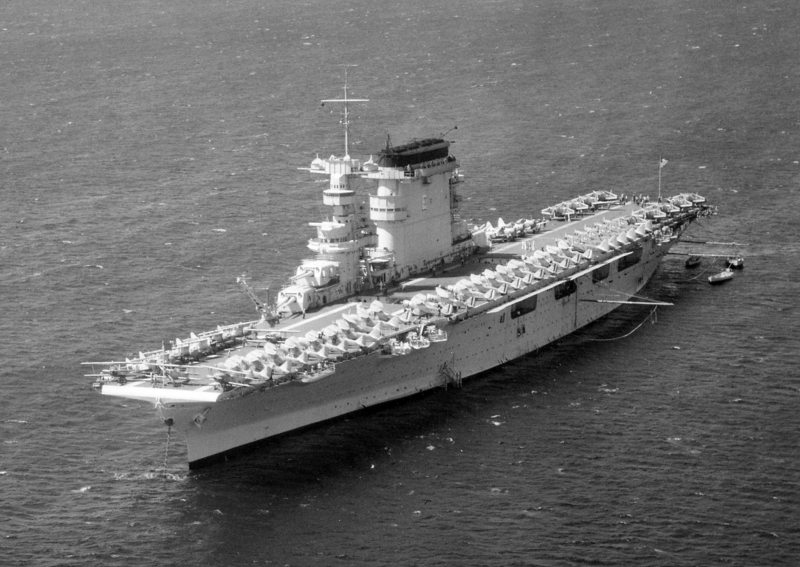
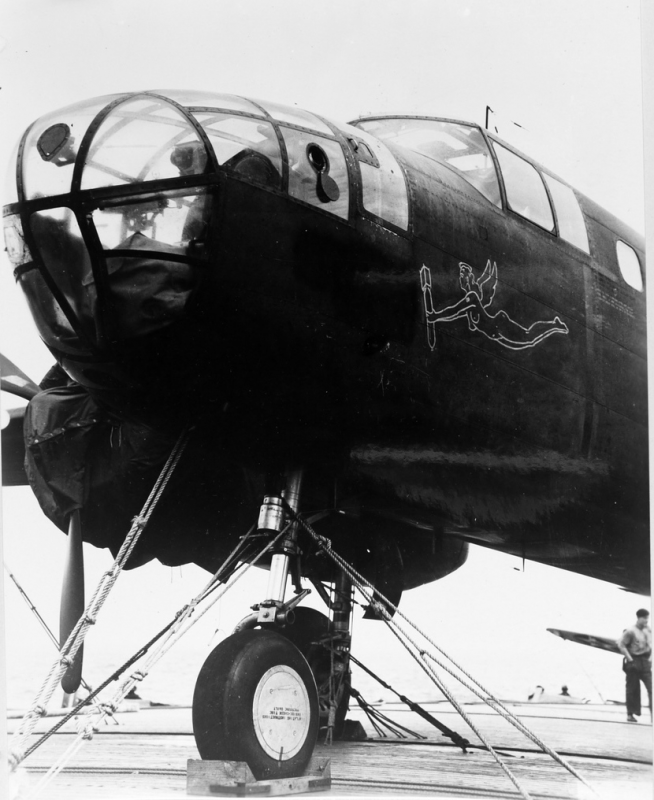
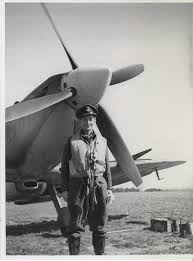

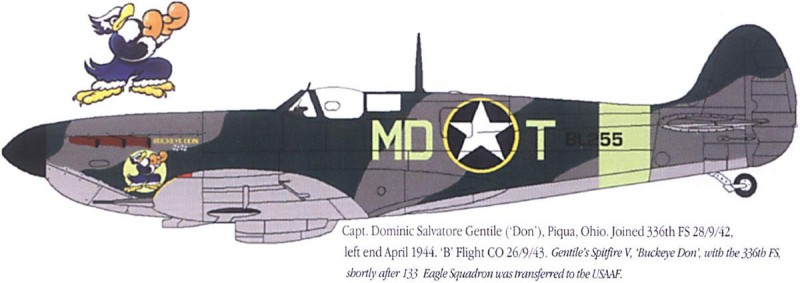
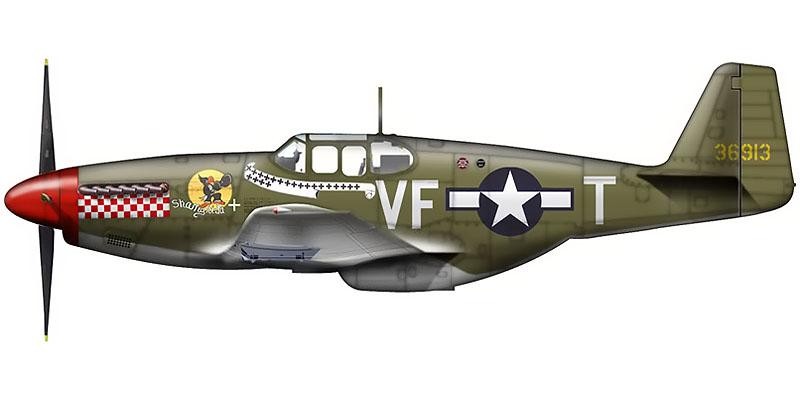
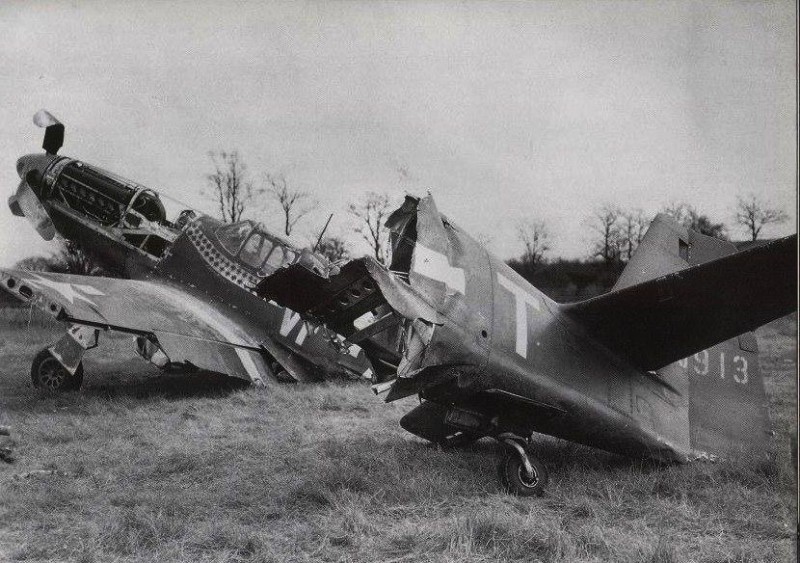
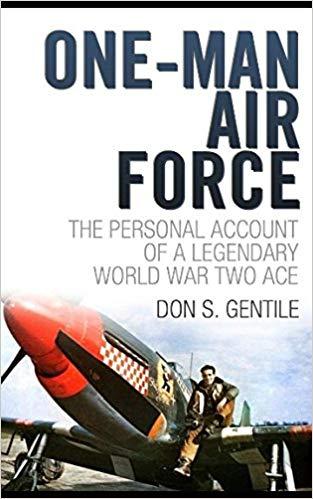


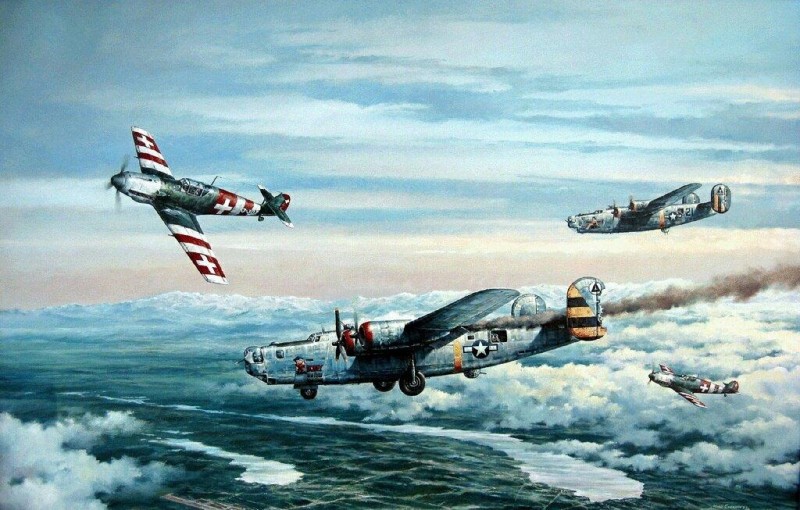

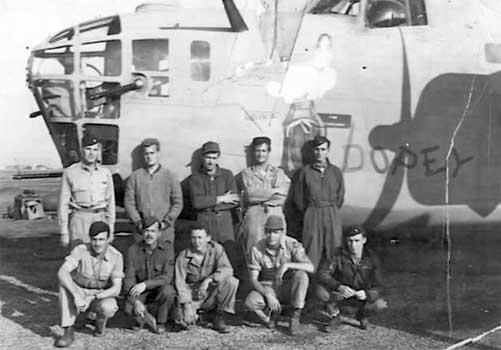

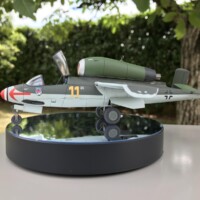
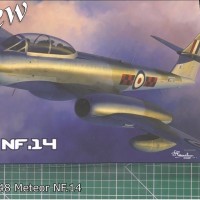
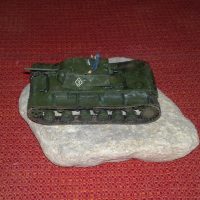
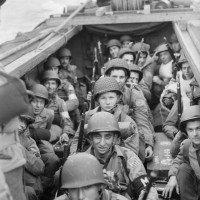
Thanks David for a fine set of images. First time seeing Gentile's famous Shangri La after the crash. The photos in this post and in previous posts depicting USAAF bombers being destroyed are very thought provoking. It just underlines the ferocity of fighting in the skies over occupied Europe. USAAF / RAF bomber crews had a job to do to bring the war to an end and the enemy was duty bound to protect their country. War is hell... Thanks for posting the nice image of the SAAF Spitfire!
Thank you, Morne. The Shanghai La was a bit of a mess, huh?
Statistically, of every 100 airmen who joined Bomber Command, 45 were killed, 6 were seriously wounded, 8 became Prisoners of War, leaving only 41 unscathed - well, at least physically...
Another thing happened "On this Day" in 1945...
Our family lost another member during the War in the Pacific. His mother was my Grandfathers oldest sister. His name was Thomas V. Smith.
This loss was attributed to a crash during a "routine" training mission in a B-25J on Sunday morning April 8th, 1945 at approximately 0830 Hours. The following is an excerpt from a local hometown newspaper article from about 20 years ago.
1LT THOMAS VERNON “TOMMY” SMITH-
After graduating from Weedville High in 1935, Thomas V Smith (aka Tommy), a son of Cecil and Myrtle Gardner Smith of Gardner Hill, went to work for Bell Aircraft in Buffalo, NY. While there, his interest in aviation was sparked. As the World War progressed, Tom decided to follow his passion and he enlisted in the Army Air Forces in February, 1943. He attended pre- flight school at Maxwell Air Field, Alabama, and earned his silver pilot’s wings for the B25 Mitchell Bomber and his lieutenant bars.
In November 1944, he received his overseas assignment to New Guinea as a B25 pilot in the 100th Bomb Squadron, 42nd Bomb Group of the 13th Army Air Force in the Solomon Islands in the Pacific Theater. His squadron participated in bombing raids against Japanese targets in the South Pacific. During this time, the 13th Air Force staged out of tropical jungles on remote islands involving the Gilbert and Marshall Islands campaign, Mariana and Palau Islands campaign, and the Philippines campaign during 1944 and 1945. They were known by the nickname, “The Jungle Air Force.”
While on a bombing mission in the Philippines on April 8th, 1945, pilot Lt Thomas V Smith’s B25, flying in formation and flying through a cloud bank, met disaster (probably a mid air collision) somewhere above the Sulu Sea in the Southwest Pacific off the Island of Palawan, Philippines. Tom’s body was never recovered. He was initially listed as MIA (missing in action) but later changed to KIA (killed in action). Among other campaign medals, citations (Philippines Presidential Unit citation) and ribbons, Tom also received the Purple Heart for his ultimate sacrifice.
He is memorialized in the Tablets of the Missing in the Manila American Cemetery and Memorial in Fort Bonifacio, Philippines which honors the American and allied servicemen who died fighting the Japanese in World War II. The American Battle Monuments Commission maintains the American Cemetery in remembrance of the American servicemen who gave their lives for freedom’s cause in the Pacific.
A stone marker also was placed by his family in the Gardner Hill Cemetery beside the graves of his father (who died shortly before Tom) and by his beloved and forever grieving mother who passed away in 1988.
This next picture is of a row of B-25's that served in his unit. It's possible that the actual plane he and his crew went down in is in this line up. This photo was taken at the Puerto Princessa, Palawan Philippines, airfield which was where the 100th was stationed at the time of the event.
The following is another account of what happened as recorded in the unit history. Tommy was one of the pilots listed as "missing" from the crew.
On a routine training flight to Leyte on 08 April 1945, B-25 #43-36015, piloted by the 100th Bombardment Squadron commander, crashed in the water while practicing operational maneuvers. The deaths of the crew of six men were listed as accidental. The members of the crew were as follows:
Capt. Robert D. Smith, Squadron Commander
2nd Lt. Robbie Peel
2nd Lt. Thomas V. Smith *** our family member
2nd Lt. Joseph L. Johnson, Jr.
Sgt. James E. Levin
Cpl. Wynn W. Daily
The following is an excerpt from ”Wayne’s Journal” on April 8th, 1945 as it was published. Wayne was a military member serving in Tommy’s Unit.
”I had a rough night.
On the 8th some more boys went down. Our C.O. and his crew were on a flight to Leyte with another plane when decided to do split S’s. He peeled off and into his routine, as he called his wing on the radio. He said “Peel off and follow me”, and seconds later he disappeared into a cloud. The second ship followed. The second ship broke out of the cloud just in time to see a huge splash in the ocean below. Circling, they saw a bunch of debris; Mae West’s and scrap covering the water. That is all.
Sometimes I wonder why these things happen but they do. Why do men go out like this? Is there such a thing as fatalism? Is life really predetermined? Does accident bring these things to pass? I believe in the former because I believe in Jesus Christ. Though fatalism used to be a fetish with me. Each day we learn from living. The lessons are sometimes hard and fast, sometimes hardly leaving an impression. One conclusion I can come to: Life is good. Life is sweet. Live it fully and clearly in preparation for the future that follows, which is the real future of mankind, material less and purely spiritualistic. Seek ye after the Spirit, the flesh is mortal and will but drop away with death.”
What an ending………………..
The 42nd Bomb Group was called the "Crusaders" and they were very active in the skip bombing and low level attacks against the Japanese. Here's another photo I found of planes in action from the same unit.
Needless to say, I hope to eventually build a 1/48 scale model B-25J from the 100th, as a tribute to Tommy... and his crew. So far this is the closest thing I have found as far as markings for a plane that he might have flown in. This one is called "Nasty Nancy" and is Serial Number 43-36001.
The plane Tommy went down in was 43-36015 which is only 14 planes apart. Both were assigned to the 42nd Bomb Group on Palawan.
Thanks again David for continuing to bring us this daily series.
No, thanks to you, Louis, for adding a fascinating addition to the series.
Wayne’s entry in the journal make a lot of sense to me, “every day we learn from living”. Muhammad Ali said a similar thing, “the man at fifty who views the world the same as he did at twenty has wasted thirty years of his life”.
Rest well, Tommy.
Great stuff again, David.
Don Gentile, one of the most controversial aces. 40 years later, when I was researching "Little Friends," the veterans of the 4th Fighter Group could still be divided between those who thought he was a great guy, like Steve Pisanos (his roommate) and Jimmy Goodson, and those who still believed he should be put against a wall and shot (Blakeslee, Jim Clark, "Cowboy" Megura, several others). I was finally able to figure out Blakeslee and Gentile: Blakeslee's family came to the Ohio Territory in 1782 and were among the founders of Fairport, while as you note Gentile's family arrived in 1907. Don grew up in the days of Sacco and Vanzetti, of overt anti-Italian prejudice by the then-strong KKK in Ohio. Bob Wehrman, a good friend and Jimmy Goodson's wingman, said you could guarantee a fight if one used an "anti-Italian slur" in Gentile's vicinity. For Blakeslee, Gentile represented everything Blakeslee's rural long-term forebears hated. The two from the first got on like oil and water.
Then add in the Air Force public relations scam of "The Great Ace Race" in the Spring of 1944. With Eighth Air Force finally taking on and destroying the Luftwaffe that spring, the ever publicity-conscious AAF (they had a PRO - Public Relations Officer - with every unit to guarantee "the Air Force story" got told in their effort to "prove" the Air Force won World War II and could thus become independent). So, who was going to be the first ace in the ETO to equal Eddie Rickenbacker's score? They could stick Walter Cronkite in a B-17 and put him over Berlin, but there weren't any back seats in fighters, so get the 10,000 correspondents getting drunk in England waiting for D-Day interested in the fighters by staging an "ace race." Never mind Joe Foss had done it over Guadalcanal in December 1942 or that Captain Richard Bong was even then making the rubber chicken circuit selling War Bonds for having done it in New Guinea the previous February. The ETO was "the main event." Then couple that with Doolittle's decision to award "victories" for "ground kills" to get the pilots to go down and strafe the airfields, an environment where skill had nothing to do with survivial, only the law of averages ruled. So by April, Don Gentile had 24 air-to-air victories and three "ground kills" for 27 - that final mission, he came on three "i d i o t s" (drop dead, Nanny) he could shoot down 1-2-3, and as he lined up someone called for help, and he turned away, in time to see the pilot calling for help go down. Had he shot those 3 down, he'd have had 27 aerial victories, and no "controversy" over whether he really did it. The crash has been explained to me by others that he came down from altitude too quickly and his vision was blurred from having been on oxygen for 7 hours. Nevertheless, Blakeslee's rule was "he who prangs his kite goes home" and he threw Gentile out, to be overruled by VIII Fighter Command, which he never ever forgave to the day he died.
Once back in America after his war bond tour with Johnny Godfrey where they extolled the virtues of "wingmen" to young pilots who'd likely never get further before the war was over, he took an assignment at Wright-Patterson as a test pilot. Among the others was Chuck Yeager, who remembered him as "the guy who, when anyone crossed him no matter their rank, he'd call General Arnold and have it taken care of." The day he died, December 6, 1950, he called up his old buddy Steve Pisanos, who was going to college at Georgetown on the AF's dime, to ask if he wanted to go flying in the T-33 for flight pay. Steve had a test to study for and had to turn him down. And then he crashed on final with a flameout and burned. As Yeager described it to me, "The reason the engine flamed out was he forgot to set the fuel selector on 'all,' so he ran out of fuel in the fuselage tank, and then it burned so well with all the gas in the wing tanks and tip tanks." (If you can't tell from the quotes, ol' Chuck was no Gentile fan)
To me, Don Gentile is a perfect example of the lust for fame and celebrity that is an "American disease." He went for the gold ring and found out it was made of brass.
THANKS TOM for this very informative behind the scenes history on the Ace Race. This is information is new to me so thank you very much for posting it!
Also of note - the two color Spitfire photos in the middle east are good for modelers to look at. The "Desert scheme" wasn't done in the factory until the Mk.VIII went into production. The Mk.Vs (like these) arrived in "standard" camouflage and were painted in desert camo at the overhaul facility at Aboukir, Egypt. The "schemes" they came up were approximations of the A-scheme, as you can see on the second photo. What makes the first photo interesting is that the camouflage pattern is a pretty well-done "B" scheme, which didn't exist anymore by 1942-43 when Spitfires finally arrived in the Middle East, making it a real "one-off" (at least photographically).
A and B-scheme? To my eye they look very much the same. I think it is the same aircraft on both photos.
It looks like the edge of the brown colour is bit sharper on the nose compared to the brown area under the cockpit. The idea of a consistent spray job can be scrapped.
Speaking of brown colour...is it just my eyes or does the elevator have a bit of dark camouflage visible? Was the elevator swapable from one side to the other on the Spit and this didn´t get a repaint?
Looks to me like the cooler, airfilter and pitot had got some kind of light dust covers on. Staged photo and someone didn´t care about taking covers off?
Exhausts seem to be different shades. Replacements? Good details for a model.
Another detail to look for as a modeller is the armoured tank in front of the cockpit. Until a few years back when new Spitfire modellers started to come out /and I started to read the reviews) I had never realized there should be a slight step between the tank and the surrounding areas. On both photos this step is visible.
Great selection today, David. here's a shot of an auto gyro at Willow Grove in the late '90s,don't know if it's original or a repro. nice carrier shots!
1 attached image. Click to enlarge.
Excellent photo, @roofrat. And the carrier shots? Well, you just have to have them - it’s a rule.
Oh, also: the submarine S-44 later achieved fame in World War II for sinking the Japanese heavy cruiser "Kako." "Kako" and the other three cruisers of the 8th Cruiser Division had destroyed several US and Australian cruisers in the Battle of Savo Island on the night of August 7-8, 1942. On the afternoon of August 10, they were nearing Rabaul on their return when S-44, one of 18 S-boats still operational in the South Pacific and a survivor of the pre-war Asiatic Fleet in the Philippines, intercepted them. Fortunately S-44 couldn't use the @#$%$@! Mark XIV fakakte torpedoes, and her four Mark Xs ran "hot, straight and true" and literally blew Kako out of the water when one hit the main magazine.
You are on fire, today, Tom. Thanks for all the additional data!
love that middlestone and earth David
Beautiful, isn’t it, Bob? A modeler’s delight.
I suppose the way he trashed ‘Shangri La’ was testament to that last statement, Tom.
Thanks as always.
Great! As Always.